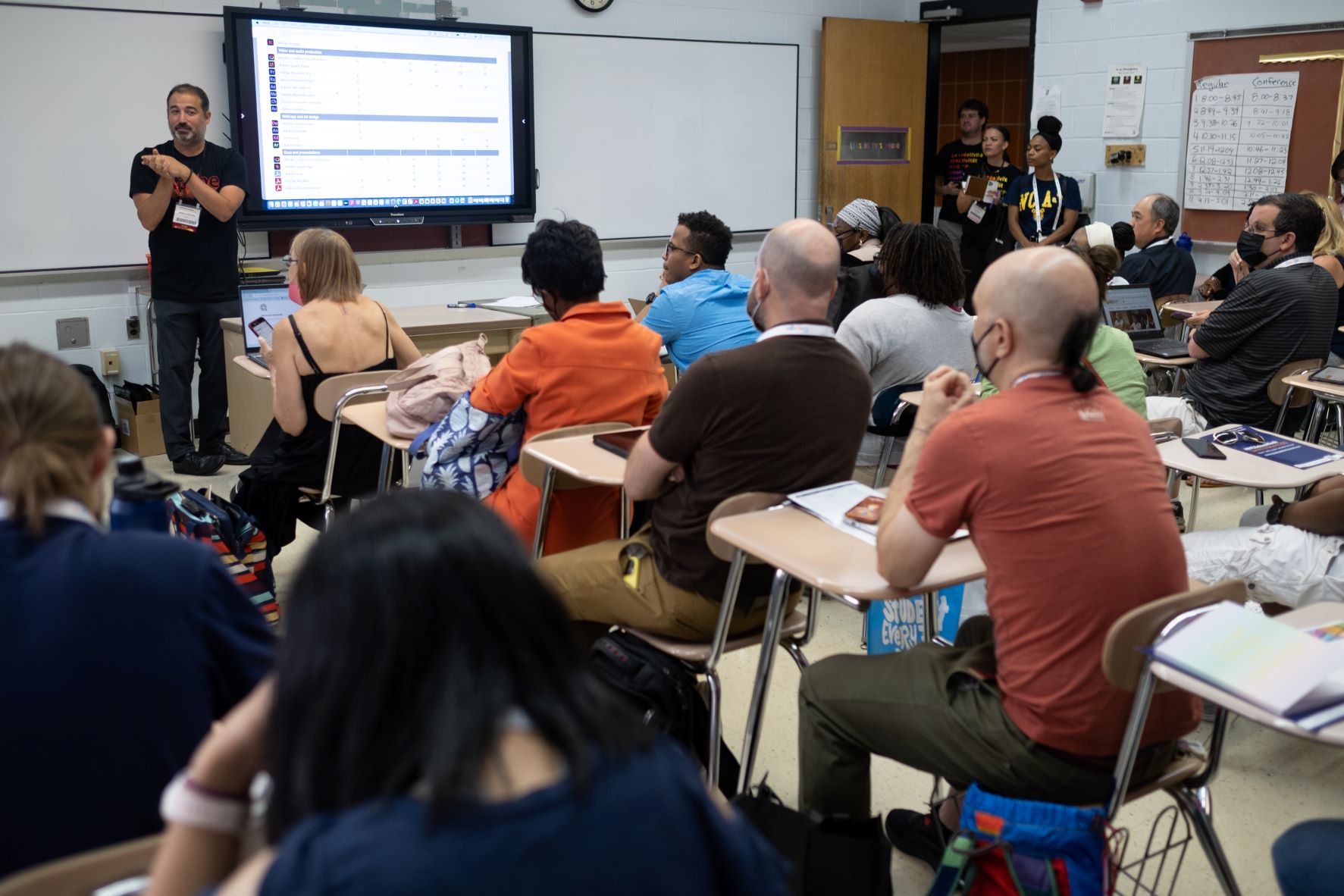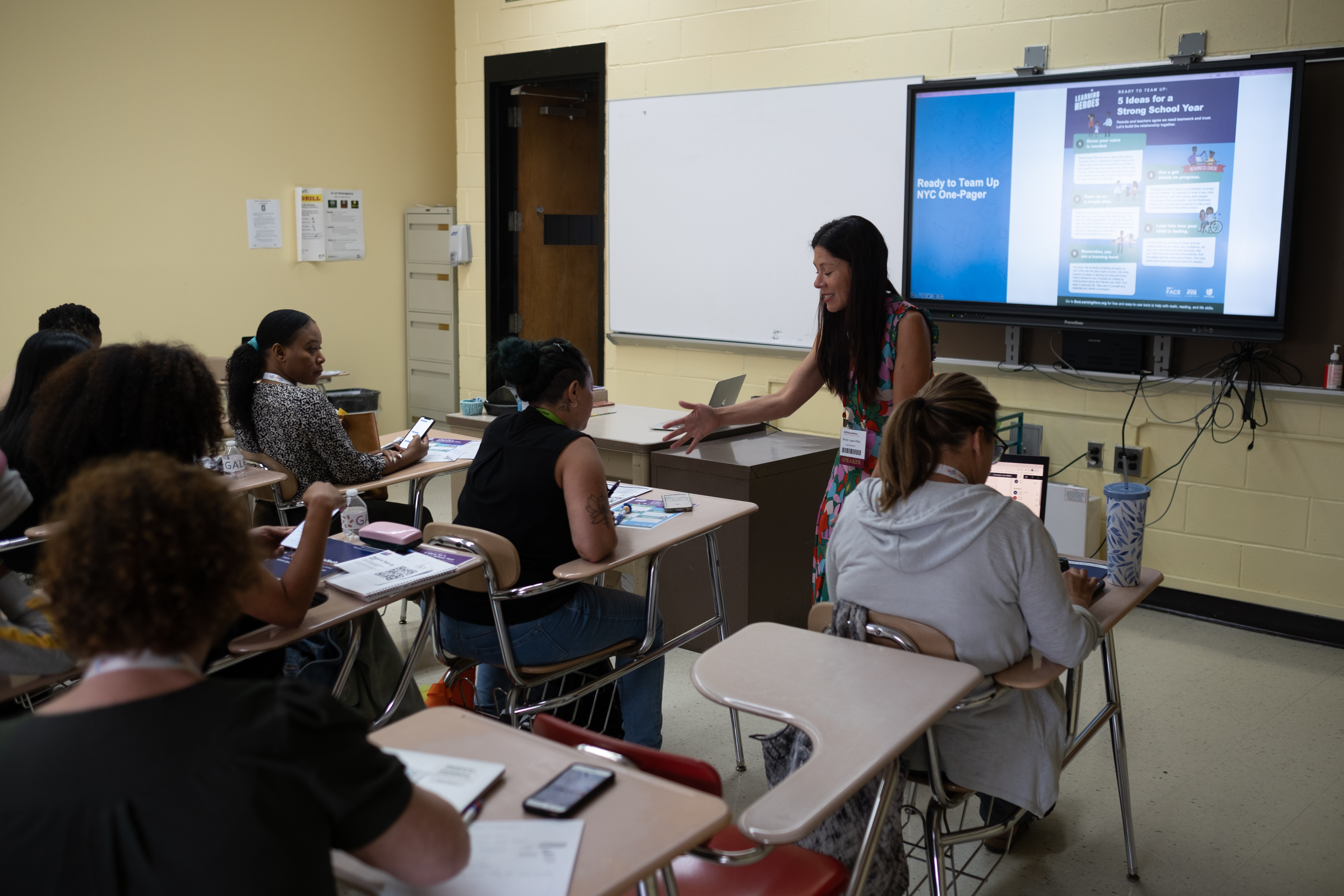10 Innovative Ideas for Integrating Technology from the #NYCSchoolsTech Summit & Beyond
Ideas, strategies, and practices to help shape the future of teaching and learning

On August 17, more than 2,000 educators attended the #NYCSchoolsTech Summit–half of whom attended in-person! They learned about the latest education technologies and got the chance to connect with colleagues.
This was the first time in three years that the summit was held in-person and the first time the event was offered as a hybrid opportunity. Participants attended a range of sessions and connected with vendors both in workshops and at their tables.
Presenters and facilitators offered innovative ideas for integrating technology into schools. Here are some ideas, strategies, and practices they believe can shape the future of teaching and learning:

1. Provide students with access to curated digital collections
We must harness the power of technology to bring students, staff, and families access to books and other resources where our students can see themselves and their experiences. School librarians are essential in providing access to curated digital collections of culturally-relevant ebooks, audiobooks, and content to meet the needs of all learners and readers. An example of this work is viewable in the Citywide Digital Library on Sora.
2. Use technology intentionally to enhance your work
Technology is embedded in our lives. This makes it imperative that schools and districts think critically about what technology they use. Is it accessible? Is student data and information private and secure? Is the tech increasing students’ learning, or is it just the latest trend? This also means that, as the SAMR model of technology integration teaches us, technology is used in a way that augments, modifies, or redefines what we do with students, staff, and families. For example, don’t digitize worksheets. Instead make interactive and collaborative digital activities to help students learn.
3. School and district staff are all responsible for integrating technology into the school experience
Technology integration is no longer something done by one or two teachers in a building. It’s now everyone’s job to know how to use technology to teach, learn, lead, communicate, and connect effectively. The Empire State Information Fluency Continuum prepares each one of our students to develop the skills and agency to be both critical consumers and creators of information as they navigate and succeed in their academic and personal lives. These skills are taught through every content area and are an integral aspect of learning in every classroom and grade level.
4. Provide staff with on-demand learning opportunities
As proven by the summit’s success! Classes that were once only delivered in-person or live online should also be made available on-demand. On-demand learning is now more available and used by staff. Schools and districts can focus on learning opportunities that are available anytime/anywhere. At the summit, presenters shared that staff feel on-demand PD is the easiest way to fit learning into their lives. They also shared the importance of receiving continuing education credit for the classes they take.
Tools and ideas to transform education. Sign up below.
5. Use best practices for hybrid opportunities
Hybrid structures are a part of how we work today. Using best practices for facilitation for both in-person and for virtual attendees assures greater success, both for the presenters and the learners. And it keeps us all from having to reinvent the wheel. This frequently means we must provide additional staffing to facilitate the virtual side of a session to ensure that all voices are heard and valued–elevating virtual voices and encouraging in person attendees to use mics so their audio is shared with the virtual audience.

6. Balance media use with time offline
As we spend more time interacting with technology, we have to be intentional about when it makes sense for both staff and students to step into and step away from it. Provide opportunities to move, to laugh, to observe and connect with nature, to become grounded in the worlds around us. Incorporate art and the natural sciences into your English class journaling assignments. Teach higher math problems using physical manipulatives. Rearrange the classroom seating to provide opportunities for paired or small group conversations. Start your lesson off with a mindfulness activity that helps the students center themselves, practice breathing exercises before and after stressful assessments and check in with students emotionally as well as academically.
7. Make all content digitally accessible
We must always provide digital content that is accessible to all students, staff, and families, including those with disabilities and who speak languages other than English. Provide and promote digital accessibility training to all staff members so everyone knows how to create accessible content–from the superintendent’s office to the school administrator who makes and distributes decorative monthly calendars.
8. Level the playing field for everyone with assistive technology
Assistive technology helps level the playing field for all students, including those with disabilities and who speak languages other than English. It provides a way for students to access their curriculum, communicate, and connect. Providing all students with devices along with education plans and assistive technology devices tailored to their needs supports student success.
9. Learn, leverage, and integrate accessibility features
Technology alone is not automatically accessible, so what makes it so? Free built-in accessibility features give everyone access to learning tools within suites on platforms such as Microsoft, Google, and Apple. Learn, play, leverage, and integrate these features into your classroom! You may be able to help a student (including ELL students), a friend, a family member, or a complete stranger benefit!
10. Remember we are all globally connected
In her keynote at the summit, Roya Mahboob, internationally known for her efforts to educate and empower Afghan girls, reminded us that our work reaches beyond the walls of the classroom or school. We are globally connected, and a major part of our work with students and staff is to show the power that can be harnessed when we think at this scale.
